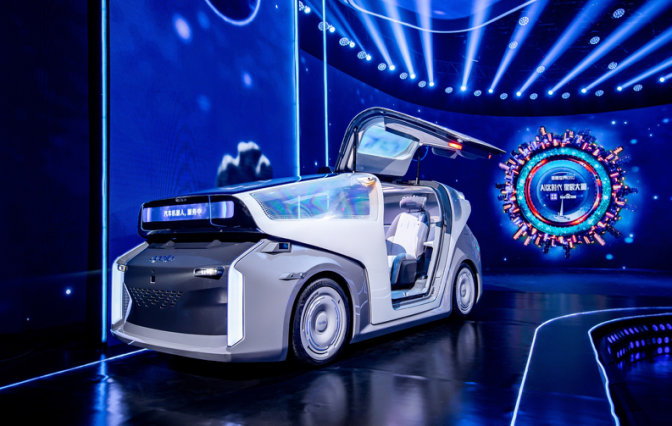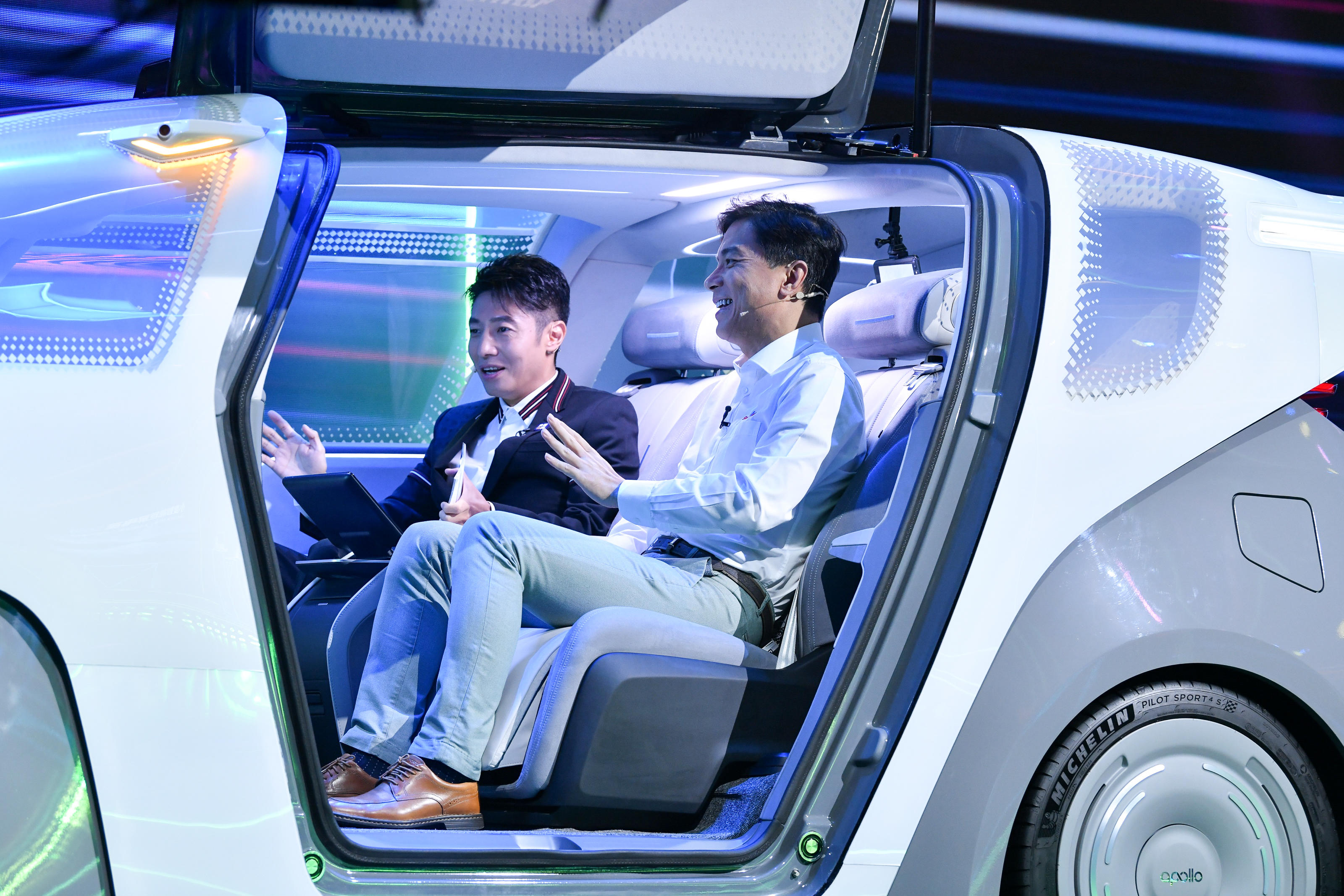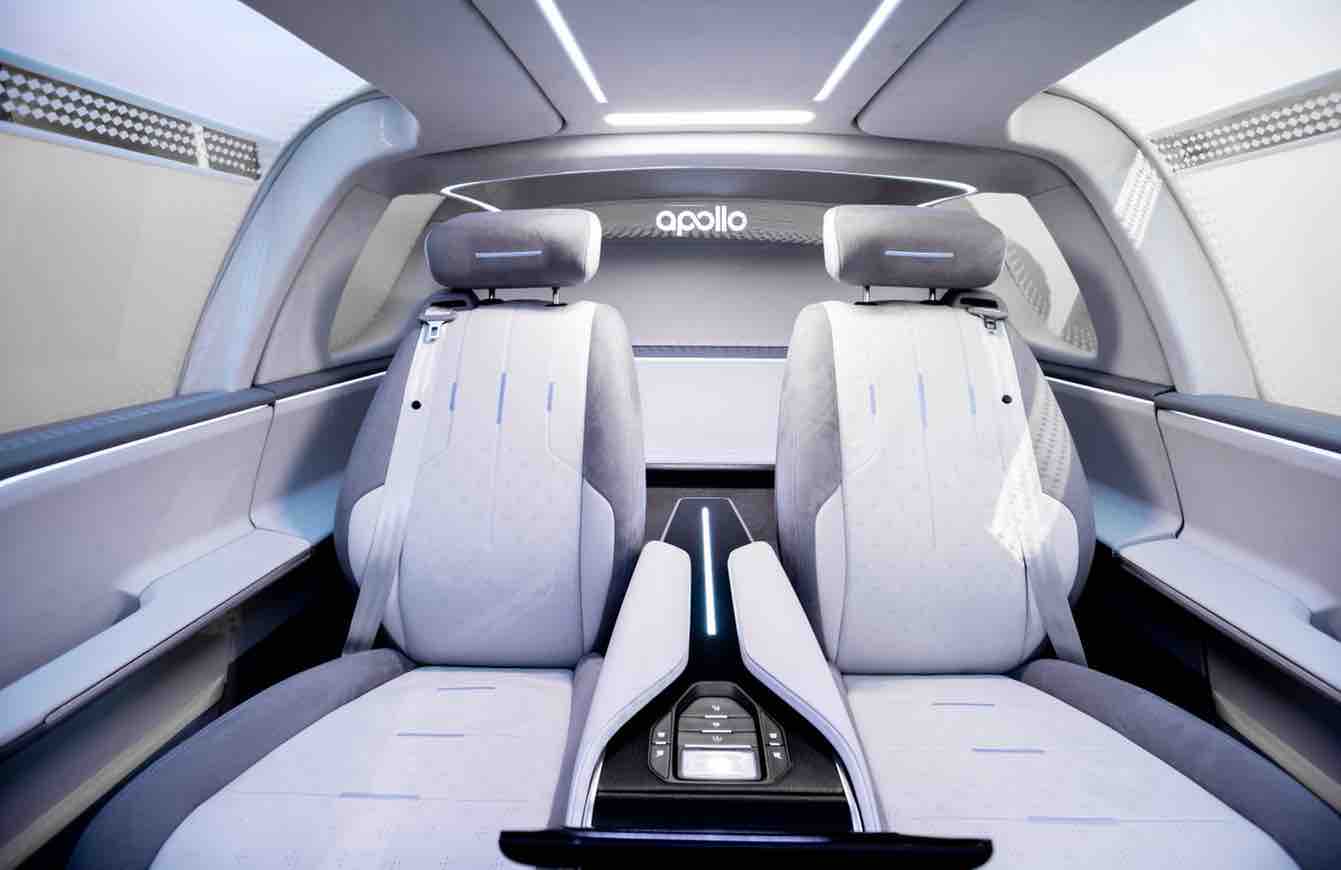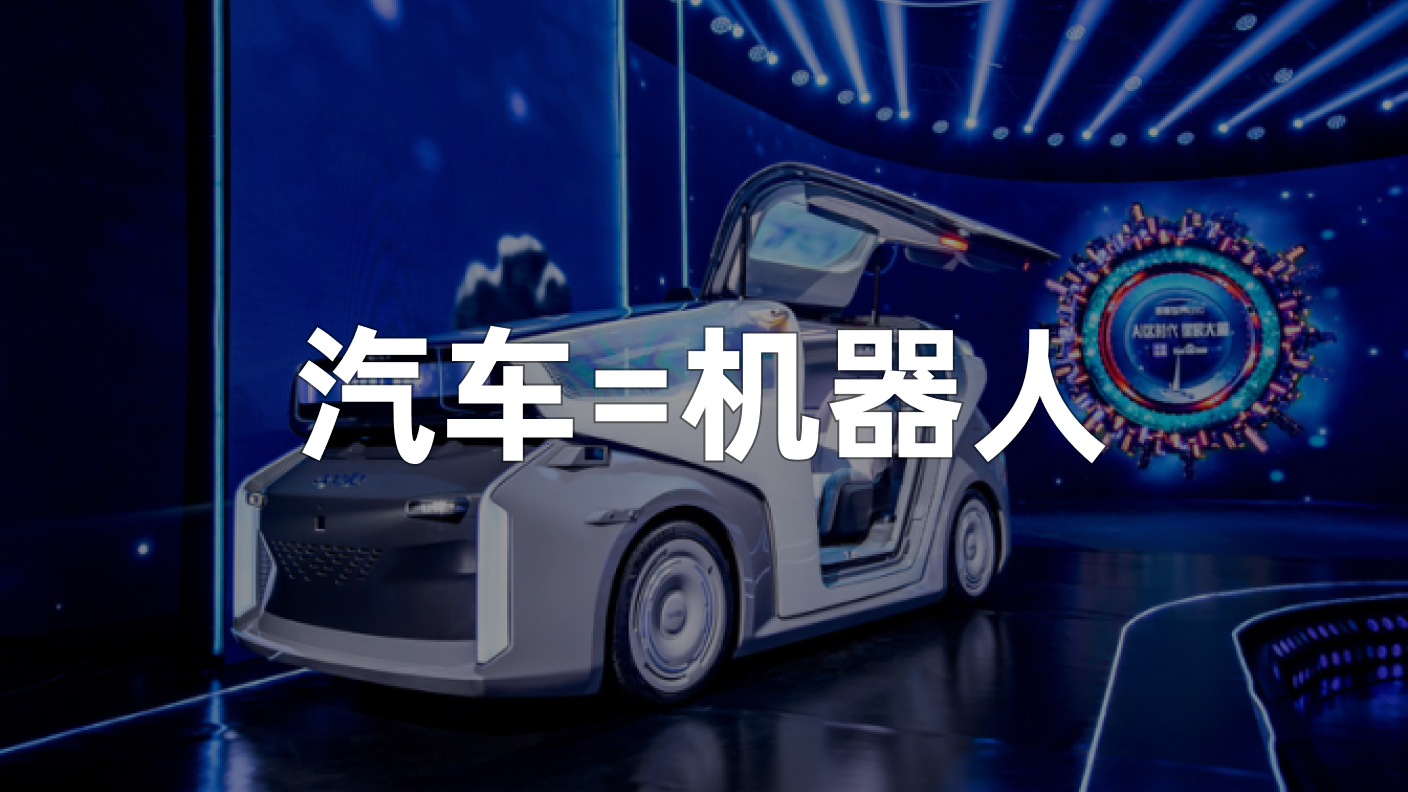As the topic of autonomous driving is in the spotlight of intelligent car discourse, Robin Li unveiled the L5 level autonomous driving car – the car robot at the Baidu World Congress 2021.
When it comes to robots, the first thing that comes to mind is typically a humanoid machine with mechanical bones. Then, the second reaction is that such a thing is still a long way off.
But the product presented today by Baidu is named so plainly that I initially thought it was just a placeholder for the user’s convenience.

In a speech at the launch event, Robin Li stated “cars of the future will become ‘car robots,’ and the future form of ‘robots’ will look very much like a car. Car robots should have the ability to autonomously drive, act as intelligent assistants, provide loyal companionship and have self-learning capabilities.”
Upon hearing this statement, I arrived at a general conclusion: Baidu hopes to create an AI robot with autonomous driving capabilities.
Therefore, on this car robot product, we can see Baidu’s ultimate form of “autonomous driving” and “intelligent cockpit.”
A robot with autonomous driving capabilities
Note that Baidu’s goal is not to create a car that can realize autonomous driving, but to create a robot that can autonomously drive in the future.

“In Robin Li’s view, the car robot is the ultimate answer to intelligent cars, regardless of whether it’s a Robotaxi, a Robobus, or a new car that goes from assisted driving to completely autonomous or unmanned driving. The future smart car, except for not being able to transform into a humanoid like Optimus Prime, should provide all services like your personal assistant.”
Therefore, on this car robot product launched today, we not only see Baidu’s solution for autonomous driving but also their ultimate form of the intelligent cockpit.
To achieve Robin Li’s beautiful blueprint, the car robot should have the most critical capability of autonomous driving.
As a transportation robot, its essence is a tool for mobility. Therefore, it must have the ability to perform autonomous driving at the L5 level. In the Baidu car robot, we cannot see any equipment related to driving, including a steering wheel or accelerator/brake pedals. At the same time, the design of the car is not done following traditional car design methods with such factors as wind resistance and the “turnaround rate” of the design having a lower priority since the word ‘driving’ has no involvement.
Although Baidu has not disclosed the hardware configuration of this future car, it can be seen from the current design that the Baidu autonomous driving car has arranged lidar on the roof and sides of the car, as well as forward-facing millimeter-wave radar and forward-facing cameras installed on the sides of the car. With this hardware, Baidu’s autonomous driving car demonstrated full-automatic driving, unprotected left turns, and pedestrian avoidance in the demonstration segment.
This is not the first time that Baidu has demonstrated its open-road autonomous driving capabilities. The Baidu Apollo project was launched as early as 2015. The Robotaxi alone has been updated five times, and now Baidu will also apply Robotaxi’s experience and technology to mass-produced passenger cars, cutting out some expensive hardware and adopting more easily scalable hardware for urban navigation assistance driving to obtain more orders.
Are autonomous driving cars already on the road? Is Baidu leading the industry?
Baidu is the first company to define the ultimate form of future cars or robots. With autonomous driving cars already on the road, does that mean that Baidu has established a leading position in the field of autonomous driving?
Leading position can be evaluated from two dimensions: accumulated experience and product implementation. Now it’s not uncommon to see autonomous driving test cars on public roads. Many companies in China that do Robotaxi have already obtained road test licenses. But Baidu has conducted Robotaxi tests in more than 30 cities worldwide and has obtained a total of 336 licenses, which is far ahead of its peers, thanks to its forward-looking decision-making and years of deep cultivation.
In addition, Baidu’s fifth-generation Robotaxi Apollo Moon, released in June this year, has reduced its cost to 480,000 yuan. Apollo Moon is equipped with two lidars, and the platform computing power has reached 800 TOPS, which can support 5G cloud-based driving. The overall capability is 10 times higher than the fourth-generation model.
While competitors are still piling up hardware and collecting more road test data, Baidu Apollo has already lowered costs to invest in large-scale operations. From this perspective, Baidu Apollo is indeed leading.
However, from another dimension, looking at the products that have already been implemented or put into use, although ANP and AVP have completed full-scene coverage of driving and parking, the current performance and installation volume of Baidu’s products do not yet demonstrate enough leading power. Perhaps this is also the main reason why Jidu Automobile needs to accelerate its pace.
The Future Cockpit Constructed by Baidu
The second point is the intelligent cabin. Once cars no longer need human drivers, the capabilities of the intelligent cabin cannot be limited to just navigation and music anymore. Baidu’s car robot has built-in a large, impressive-sized screen to satisfy the entertainment needs of passengers. The in-car camera can also actively monitor passengers and provide additional services.
To meet the needs of various scenarios, Baidu’s car robot also comes equipped with color-changing glass. In addition, zero-gravity seats and gull-wing doors provide an added touch of futuristic technology and enhance user experience.
Moreover, local life services have become a key factor in increasing user retention. In the car robot, Baidu will embed many application ecosystems, including medical services, ticket booking, shopping, and more, all of which can be accessed through voice commands.
Above is the ultimate form of Baidu’s future intelligent cabin. Until now, the concept of an intelligent cabin has been vague and undefined.
Here, we can compare how various companies interpret the concept of an intelligent cabin.
For Huawei’s Harmony cabin, the core is interconnectivity and seamless interaction between all devices. Be it phone and car, car and smart home, all are tightly connected. However, at present, car entertainment systems must also meet the driving demands, such as having a user-friendly navigation system. Phone mirroring is already convenient enough, but car connectivity between drivers takes precedence.
As a brand that aims to be a “mobile home,” Ideal cares deeply about each individual’s user experience. For example, the front passenger entertainment screen is designed for the female passenger’s entertainment needs, and the second-row space must be comfortable enough. Additionally, a four-tone language voice system is essential since second-row passengers may have their own needs.
Baidu believes that an intelligent cabin should be a comfortable space equipped with an AI assistant that provides attentive and thoughtful services to car owners. The space must be maximized and the user interface must be easy to operate. When the car has become a mobility robot, the cabin AI assistant must have the ability to provide all-scenario services, which is Baidu’s definition of the “ultimate form” of an intelligent cabin.
The third point is active learning ability. As a future-oriented comprehensive smart body, Baidu’s car robot also has OTA capability to handle users’ constantly evolving demands. Not only will the software system be upgraded, but the car robot should also possess active learning abilities. For example, the system should form memories after receiving specific commands from the car owner during certain time periods, and automatically provide services accordingly.## “Carrot Run” Speeds up Popularization of Unmanned Travel
At the conference, Baidu Apollo also brought its unmanned vehicle travel service platform-“Carrot Run”. The name sounds cute because “Carrot” is the transliteration of “Robot” in Chinese.
In previous competitions, many Robotaxi companies were actively laying out and accumulating data, but few succeeded in commercial operations. In the second half of the competition, scale operation will be the key.
In terms of commercial operations, Baidu is still the industry leader. Last year, it launched Robotaxi commercial services in four cities across the country, and the service is open to the public with passengers required to pay a fee. As of the first half of 2021, Baidu Apollo’s autonomous driving travel service has served over 400,000 customers, with a test mileage exceeding 14 million kilometers.
My colleague has previously experienced Baidu’s fourth-generation Robotaxi in Beijing Shougang Park. Customers can simply order via an app, and the vehicle will complete various driving actions such as turning, left turns without protection, and avoiding pedestrians in the absence of a driver. From obtaining a test license in Changsha to expanding from Yizhuang to Shougang Park, the service range of Baidu Robotaxi has become wider and wider, and the number of people it serves has increased.
As an upgraded version of Baidu Apollo Go, the mission of Carrot Run is to provide unmanned travel services to the public and accelerate the popularization of shared unmanned travel. In the next three years, Baidu Apollo’s unmanned travel services will expand to 30 cities, the service fleet will expand to 3,000 vehicles, serving over 3 million people, exploring more travel scenarios and solving more travel problems.
Future and Present
Whether it is a car robot or a shared unmanned vehicle, it is Li Yanhong’s grand plan and beautiful vision for the future of travel, but we still need to take things one step at a time.# Apollo’s Stride in Autonomous Driving for the Last 8 Years
During the last 8 years, Baidu’s Apollo has made many forward-looking decisions, but the most criticized one is the lack of impressive systems or features installed in cars. Finally, Jidu Auto was born this year. However, from day one, Baidu aimed to become a Tier-1 supplier, empowering traditional automakers. Unfortunately, numerous new contenders selected Mobileye, and many autonomous traditional automakers invested in Bosch, leaving little interest in Baidu’s products. Consequently, Baidu’s decision to manufacture cars was a “last resort.”
At present, the core team of Jidu has been established, and the first mass-produced car has entered the clay model stage. It’s expected to be released in the market next year, and we may see Baidu’s smart solutions from driving to parking. During this time, Baidu will continue to empower automakers and offer smart driving solutions to companies such as WM Motor.
According to Baidu, starting from Q3 this year, a Baidu-powered smart driving system vehicle will be launched every month.
Empowering automakers and developing Robotaxi has become the two pillars for Baidu’s intelligent vehicles to advance forward, solidly walking to convert the “demo” autonomous vehicle shown today into reality.
It took only 13 years for cars to replace horse carriages as the primary mean of transportation. When we look back at the development of industrial history, we realize that every industrial revolution originated from the pursuit of liberating human labor. In the information age, cars should also break away from their purely mechanical attributes and become our intelligent space. Therefore, our initial motivation is to pursue autonomous and intelligent travel.
This article is a translation by ChatGPT of a Chinese report from 42HOW. If you have any questions about it, please email bd@42how.com.
